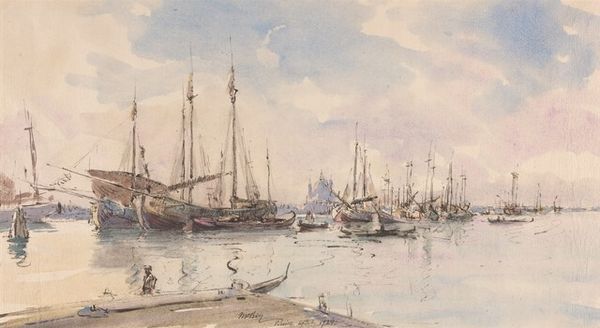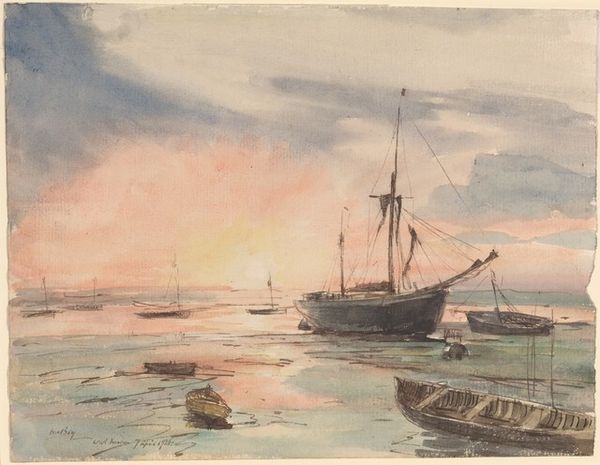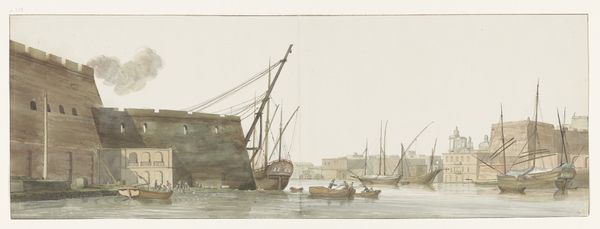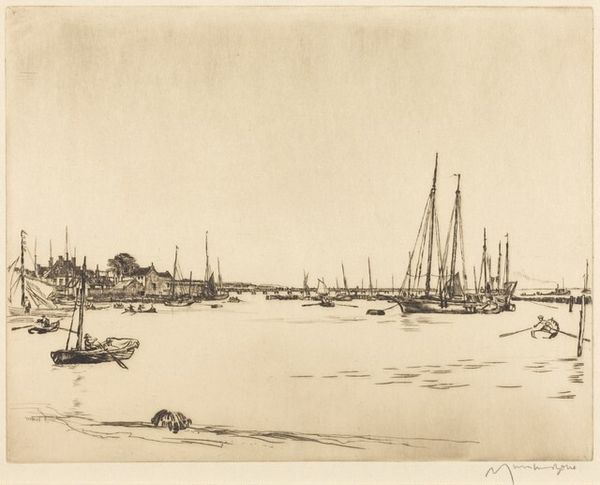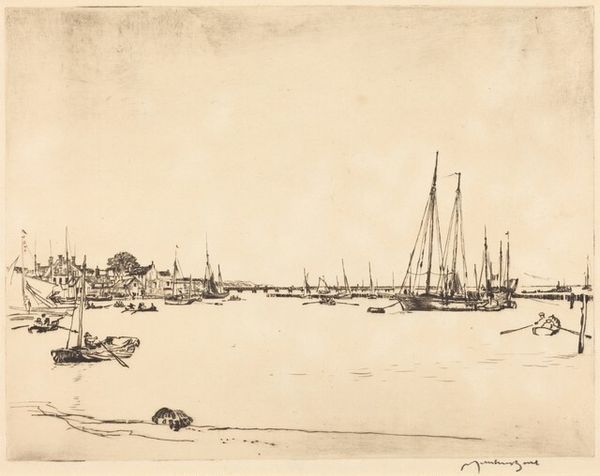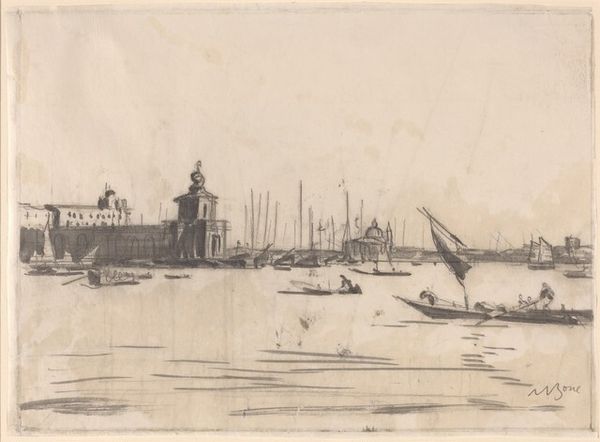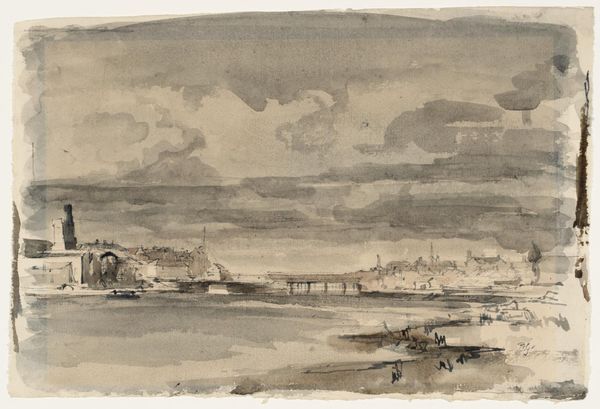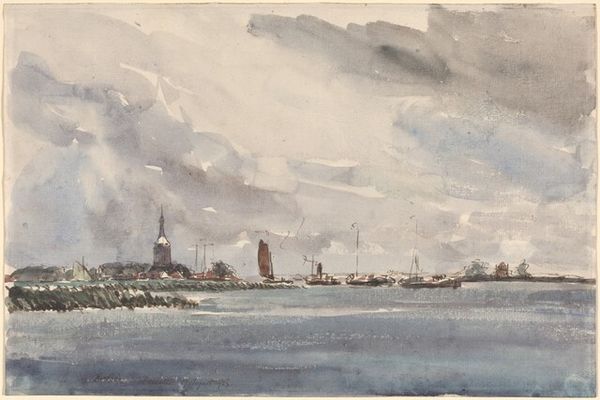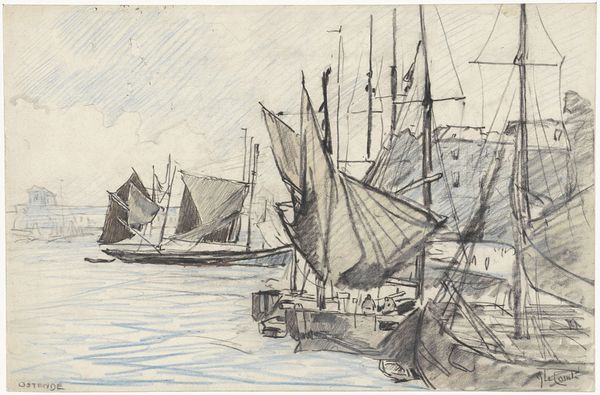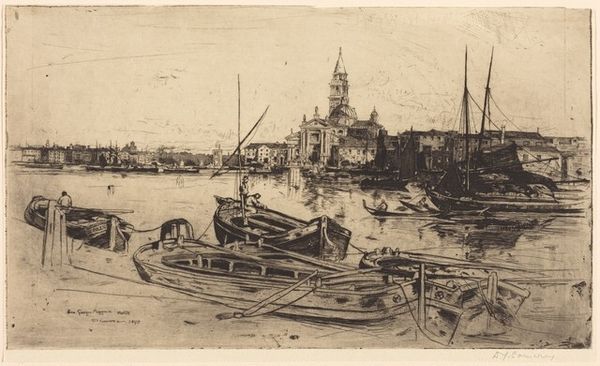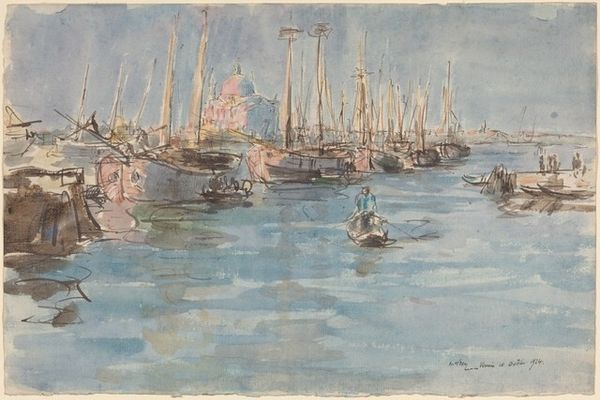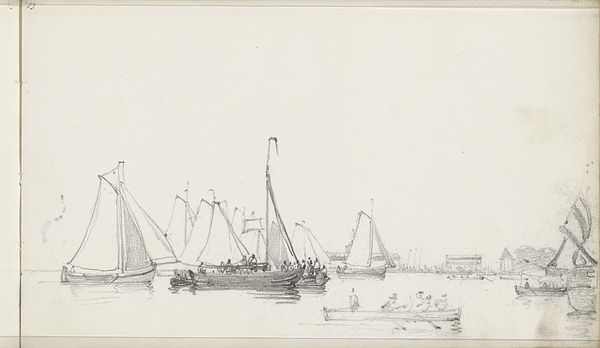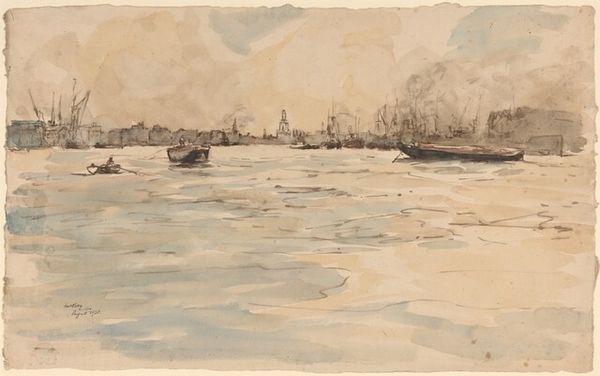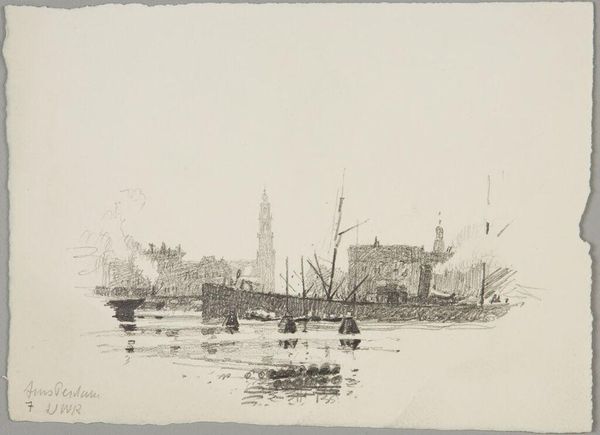
Dimensions: overall (approximate): 20.9 x 39.7 cm (8 1/4 x 15 5/8 in.)
Copyright: National Gallery of Art: CC0 1.0
Editor: Here we have James McBey's "Venice," a watercolor from 1925. It has this wonderfully ethereal quality, almost dreamlike with its soft washes of color. What strikes me most is the way the architecture seems to almost dissolve into the sky. How do you interpret this work? Curator: Indeed. From a formalist perspective, consider the strategic deployment of watercolor. Observe how McBey exploits its inherent transparency to create a layering effect. Note also how this layering alludes to depth through superimposition, and how the limited palette of blues, grays, and creams reinforces a unified, almost monochromatic scheme. Do you observe any contrasting textures? Editor: Yes, I see that the brushstrokes depicting the water are much looser and more fluid than those used for the buildings, which are more defined, if still quite soft. It’s like he's capturing the dynamism of the water against the static nature of the city. Curator: Precisely. McBey leverages the medium's versatility to create that very opposition. The materiality of watercolor becomes central, communicating movement, depth, and stillness all in one composition. Ask yourself this: how does the negative space contribute to the overall balance? Editor: I think the open sky and the expanse of water actually emphasize the density of the boats and buildings in the center. They act almost as framing devices, drawing your eye to the focal point. Curator: An astute observation. Notice how these formal choices influence your reading of "Venice." The piece isn't merely a representation; it’s a study in pictorial organization. By manipulating the formal elements, McBey effectively communicates… stillness. Editor: This was great. I realize now that focusing on the formal elements opens up new perspectives. I was mostly impressed by my feelings! Curator: Agreed! By deconstructing and analyzing those choices we get a greater appreciation for the intentionality of the artwork.
Comments
No comments
Be the first to comment and join the conversation on the ultimate creative platform.
